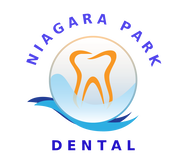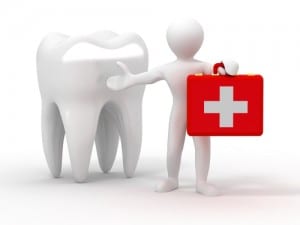|
When parents say: “They are only baby teeth, they are going to fall out anyway” they have the wrong impression. The child’s dental visit sets the tone for lifelong dental health. The fact is, primary teeth serve as the guides for the permanent teeth and are critically important to the health and function of their adult successors. What’s more, primary teeth are the child’s teeth for most of childhood — children don’t usually begin losing them until about age six, and the last primary teeth aren’t lost until around age twelve. It’s just as important to care for them as for the permanent teeth that come later. Prevention is the key: The importance of primary teeth and preparing for a lifetime of good oral health are the main reasons why parents should bring their children to see a dentist. It’s more than just a casual visit. Early dental visits may also reveal underlying conditions that may indicate future problems, and determine how often follow-up visits might be needed. Children with low risk for oral or dental disease might only be seen annually or semi-annually until the baby teeth are all fully erupted in the mouth and in occlusion. Children assessed at high risk might be seen as often as every two to three months. Treating Tooth Decay One of the prime purposes for an children dental visit is to examine the child for a number of forms of tooth decay, that can affect babies and small children. For many years, health and childcare professionals have recognized a specific pattern of such decay, known as Baby Bottle Tooth Decay (BBTD). BBTD was believed to be primarily associated with the use of a sleep-time bottle that contains a liquid with natural or added sugars such as formula, or juice. It generally occurs between the ages of twelve to eighteen months. In recent years, similar cases of early and severe tooth decay have been found in children who do not fit the classic BBTD pattern of bottle use. The term Early Childhood Caries (ECC) is now being used to reflect a broader concept of the problem of tooth decay in infants and young children. ECC includes cavities associated with many causative factors, mostly sugars. These include continuous use of a “Sippy-cup,” at-will breast-feeding throughout the night, use of a sweetened pacifier or the regular use of sugar-based oral medicine to treat chronic illness. ECC first affects the upper front baby teeth, which usually erupt at around eight months of age, followed by the primary back teeth, which begin to erupt at about twelve months of age. At its most severe stage, ECC may then affect the lower front teeth. ECC is really much like any other type of tooth decay, dependent on the presence of three conditions: bacteria in dental plaque on the teeth, unprotected teeth and the right mix of carbohydrates from food and drinks, such as natural or refined sugars. Break the cycle: Because all three of these conditions must be present for a cavity to form, there are at least three opportunities for intervention: (1) eliminate or reduce the bacteria through oral hygiene; (2) reduce the presence and frequency of carbohydrates by dietary changes; and/or (3) make the tooth more resistant through the use of fluoride. Conclusion:There is mounting evidence that a child’s oral health is closely tied to his or her mother’s. This is why it is important that parents promote their own oral health through regular dental visits and proper hygiene habits
0 Comments
What to include in your emergency kit for dental emergencies?
Conclusion:Be prepared for dental emergencies. This can be easy and saves you lots of trouble later.
Dental care routines are very important regardless of age. This article focuses on teenagers for two main reasons: 1- Dental decay is considered to be a disease of adolescence, with teeth having a higher chance of decaying during our teenage spill. 2- Oral health is neglected the most during these times. When the person is too busy in daily life, lots to do. Between socializing, playing sports, studying, and …. this all might make the adolescent neglect his/her oral health. Looking after the oral health and teeth in this period is very important because ill health could destroy a smile and break the teenager’s long-term confidence, especially in social situations. Points to remember: 1- Encourage your teenage daughter/son for a better oral health by attributing nice teeth to nice smiles, and better social life. 2- Their diet should be rich in nutrients that will build their healthy smile, The diet should be rich in vitamins. It also means consuming moderate amounts of sweet food to avoid the development of any dental cavities and other gum problems. 3- Hormonal changes can aggravate any gum conditions, so extra care must be carried out. 4- Discourage bad habits like smoking. 5- Encourage your teenage child to use sports mouth guard when playing sports. 6- Keep your 6 monthly dental check ups and cleans to treat any issue as soon as it arises. Conclusion:Teenagers are more threatened by dental problems. Simple preventive procedures can help maintain a healthy and nice smile, that will reflect on the persons ego and confidence.
Looking after your teeth involves simple procedures that everyone has heard of, brush twice a day and floss. And keep your 6 monthly dental check ups. However there are other things you can do for a better oral hygiene: Food and oral hygiene: Pomegranates: They have an antioxidant that hinders the ability of dental plaque to stick to tooth surface. Calcium and phosphorus sources: Calcium and Phosphorus protect the enamel of the tooth and make it stronger. You can get these from cheeses, meats, nuts, and milk. Fruits and Vegetables. Other than the effect of vitamins and fibers they contain, fruits rich in fluid content like apples and melons help wash your teeth and act as neutralizing medium against the acidity in other vegetables like citrus fruits and tomatoes and produced by the dental plaque and causes cavities. Chewing gum. Gum helps dislodge food particles, and induce salivation which washes your teeth and neutralize acidity. Xylitol gum also helps prevent bacteria from adhering to the tooth surface. Daily Dental Practices Not Popular: – Mouth wash: the use of mouth wash can be the difference between healthy gums and ill gums and teeth. There are many types of mouth washes. Talk to us to find out which one suites you better. – brush the back of your teeth: It is not as simple as it sounds, but happens quite often that people tend to scrub what they see only. – Tooth Mousse: A product that works with your saliva enhancing the Enamel of your tooth. – Use of tooth picks with a brush on the tip. These can clean between teeth even better than flossing, because sometimes the side surface of a tooth is concave which can be missed by a floss, but the tooth pick with a brush can clean the surface. – Use of electric tooth brushes. Electric tooth brushes have come a long way and they are strongly recommended over manual ordinary ones. – Chew leaves, like mint, lettuce. These tend to neutralize any acids and clean the plaque off. Conclusion:Watch what you eat, and try to improve your dental hygiene habits with these easy tips.
|
AuthorArticles are written by Dr M Hajarat. Archives
July 2024
|
|
Niagara Park Dental
3 / 16 Washington Avenue Niagara Park, NSW 2250 Email: [email protected] Phone: (02) 4329 3003 |
HOURS
Mon 9:00 - 5:30 Tue 9:00 - 5:30 Wed 9:00 - 5:30 Thu 9:00 - 5:30 Fri 9:00 - 5:30 |
|










